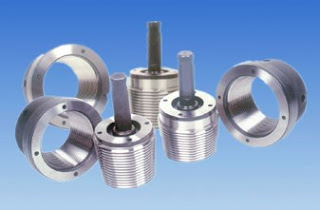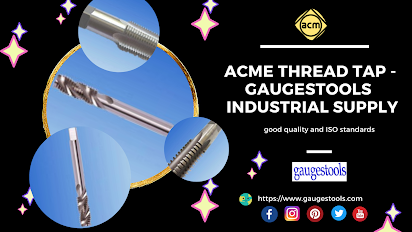Whitworth Thread Gauge| Things You Need To Know About Whitworth Thread Forms
Whitworth threads were the first national thread screw standard. The present form of the thread is based on a fundamental triangle having an angle of 55 degrees at all peaks and angles. The relevant thread form with the Whitworth thread gauges is the British Standard BS 84 -2007.
The Whitworth thread forms are now considered obsolete and have been replaced by the metric and the unified thread. However, there are certain applications where the Whitworth thread forms are still used. Thus, the Whitworth thread gauge also needs to be employed for determining the profile of the thread forms.
The British standard brass threads are based on the Whitworth thread forms in all the standard diameters with 26 threads per inch. The Whitworth thread forms were used in general brass work, brass tubing or gas fittings. It is found that many antenna bases use this thread and its specific dimensions have been derived from the Whitworth thread forms.
General characteristics
The Whitworth pipe threads, which are still a recognised international standard have two tolerances are present for the external class and one for the internal Whitworth pipe threads. Moreover, the Whitworth pipe thread designation have been categorised into 2 groups consisting of pressure-tight joints which are not made on the thread(ISO 228/1) and the other is pressure joints which are made in the thread (ISO 7/1).
Measuring the thread gauge
In order to measure threads, various instruments are required including a calliper thread gauge and a table for matching the information. Measuring the threads helps to check their compatibility of the connection. There are a wide variety of threads like filters, fittings, manifolds and valves, purifiers, regulators and quick couplings.
1. The first thing during the measurements of the thread is observing whether it parallel or tapered. The tapered threads of the Whitworth types include BSPT while the straight or parallel is the BSPP.
2. After this, one requires measuring the thread diameter with the help of calliper and also determine the diameter and the measure on the top of the threads. In case if tapered thread, measurements are done on the 4th or the 5th full thread form while on the case of a straight thread, it is done on any full thread form.
3. The number of threads per inch or pitch needs to be determined now.
4. The determined parameters require being matched with the table to find out the thread type.
You may log onto Gauges Tools in order to find out more on Whitworth thread gauges and forms.
The Whitworth thread forms are now considered obsolete and have been replaced by the metric and the unified thread. However, there are certain applications where the Whitworth thread forms are still used. Thus, the Whitworth thread gauge also needs to be employed for determining the profile of the thread forms.
The British standard brass threads are based on the Whitworth thread forms in all the standard diameters with 26 threads per inch. The Whitworth thread forms were used in general brass work, brass tubing or gas fittings. It is found that many antenna bases use this thread and its specific dimensions have been derived from the Whitworth thread forms.
General characteristics
The Whitworth pipe threads, which are still a recognised international standard have two tolerances are present for the external class and one for the internal Whitworth pipe threads. Moreover, the Whitworth pipe thread designation have been categorised into 2 groups consisting of pressure-tight joints which are not made on the thread(ISO 228/1) and the other is pressure joints which are made in the thread (ISO 7/1).
Measuring the thread gauge
In order to measure threads, various instruments are required including a calliper thread gauge and a table for matching the information. Measuring the threads helps to check their compatibility of the connection. There are a wide variety of threads like filters, fittings, manifolds and valves, purifiers, regulators and quick couplings.
1. The first thing during the measurements of the thread is observing whether it parallel or tapered. The tapered threads of the Whitworth types include BSPT while the straight or parallel is the BSPP.
2. After this, one requires measuring the thread diameter with the help of calliper and also determine the diameter and the measure on the top of the threads. In case if tapered thread, measurements are done on the 4th or the 5th full thread form while on the case of a straight thread, it is done on any full thread form.
3. The number of threads per inch or pitch needs to be determined now.
4. The determined parameters require being matched with the table to find out the thread type.
You may log onto Gauges Tools in order to find out more on Whitworth thread gauges and forms.





Comments
Post a Comment